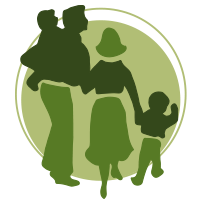Luck’s Yard Chiropractor Mike Marinus has written 3 great articles about baby issues and has also made films which you can watch on our website or Youtube.
Read on to find out about:
TUMMY TIME
What is tummy time?
Tummy time is a form of exercise for all babies under the age of 6 months. It involves placing your baby on their tummy, preferably on a flat surface so they can bear weight through their elbows.
It is recommended to practice tummy time for 30 minutes a day in short bursts – as long as baby can abide.
What are the benefits of tummy time?
- Children show better motor skills and milestone achievement.
- It reduces the risk of a misshapen head and helps to prevent flat head syndrome (Plagiocephaly).
- It improves baby’s ability to move around on their back and tummy and leads to better rolling and crawling.
- It leads to less obesity
Is it all about having a strong neck?
No, tummy time also involves the muscles of the arms, back and shoulders leading to better head control.
You can do tummy time with baby on your chest but a flat surface is preferable eg a mat on the floor
The sooner you start – from the first week after birth – the better baby will tolerate being in this position.
Never leave baby unsupervised during tummy time.
What’s the best way to introduce tummy time?
Some babies will get upset when placed straight onto their tummy. If this is the case, start with baby on their bacs and gently roll them from this position onto their tummies making it an easier transition.
MISSHAPEN HEAD/FLATHEAD SYNDROME (PLAGIOCEPHALY)
What’s it all about?
Plagiocephaly is a condition characterised by a flattening of one side of baby’s head. This can be caused by baby being too crowded in the womb or after birth, when baby is placed in the same position for extended periods of time. Babies have soft, malleable skulls which are susceptible to shape change.
Plagiocephaly will sometimes improve as your baby grows, but often intervention is needed.
How to prevent a misshapen head
Babies must sleep on their backs but make sure their head faces equally left and right during sleep times.
Minimise pressure on the back of your baby’s head whenever awake by:
- Start getting your baby used to tummy time (link) in the first week after birth. Tummy time should always be supervised. When baby is very small it can also be done with baby lying on your chest.
- Let gravity build your baby’s neck strength rather than flatten their head – in other words only have baby in car seats when necessary and minimise time is bouncers and swings.
- Reduce the amount of time baby’s head is in contact with a flat surface
- Alternate arms when bottle feeding
- Carry baby in your arms.
How to manage Plagiocephaly
- Encourage supervised tummy time and aim for it to last more than 50% of their waking time – done in short bursts
- Proactively alternate baby’s head when placing them to sleep
- Change your holding position and don’t put pressure on the flattened side of the head
- Alternate the hip/shoulder side that you usually carry baby on
- Encourage baby to move from the flat side of their head by placing something visually interesting on the unaffected side
- When bottle feeding alternate your preferred feeding side
If you have any concerns about the shape of your baby’s head or would like a check-up, consult a healthcare practitioner that specialises in the paediatric care of plagiocephaly.
ALL ABOUT BURPING 
Mike has 3 tips to help burp your baby successfully but firstly he answers this question:
Do I need to burp my baby after every feed?
YES! Whether your baby is breast or bottle fed, they are going to take in air whilst feeding, fussing and crying. The majority of burping takes place after the feed but you can burp your baby beforehand and also during a feed. There is approximately a 20 minute window for effective burping before the air is swallowed from the stomach into the small intestine where it can cause discomfort and bloating.
Tip #1
No patting, rather rub the baby’s lower back in an upwards direction.
Seat baby on your lap, holding them so their spine is straight which helps to lengthen the windpipe so air can be ‘burped’ through the mouth. A bit of bouncing can help direct the air up and out. Your grip is important – ALWAYS support the head and neck.
Tip #2
Place baby on your lap facing forwards (so their spine is against your tummy). Interlace your fingers across baby’s tummy with your thumbs ‘hooking’ gently under baby’s arms. Lift baby slightly to create space in baby’s chest for the air to come out.
Tip #3
Modify the classic technique of holding baby over your shoulder. Babies tend to lie with their legs up when being held over the shoulder this can ‘kink’ the windpipe making burping more difficult. By placing your hands around baby’s bottom and wiggling you’re able to bring their legs down and allow the oesphagus to open fully allowing burps to come out.
Burping becomes easier with practice and confidence so follow the techniques above and you can view a video of burping techniques to help you.
Please click on the following links to see Mike explain his advice on:
Babies and crawling
https://youtu.be/l0ntB9U6SNw?si=k8Lm5yMu4Pe5wIws
Children and sitting.
https://youtu.be/h-4opzk5F0E?si=I90CXu4UyzNP9MYG
We have tummy time, flat head and burping brochures in clinic if you would like to pick one up when you are next here.
Photos: Mike Marinus/Polina Tankilev:pexels.com





